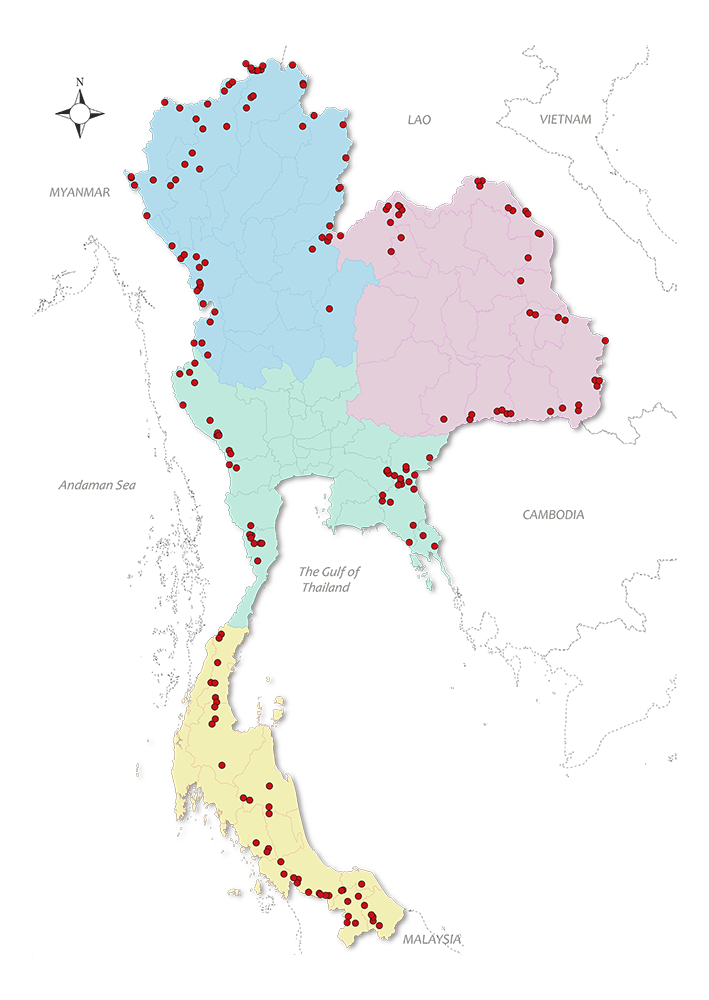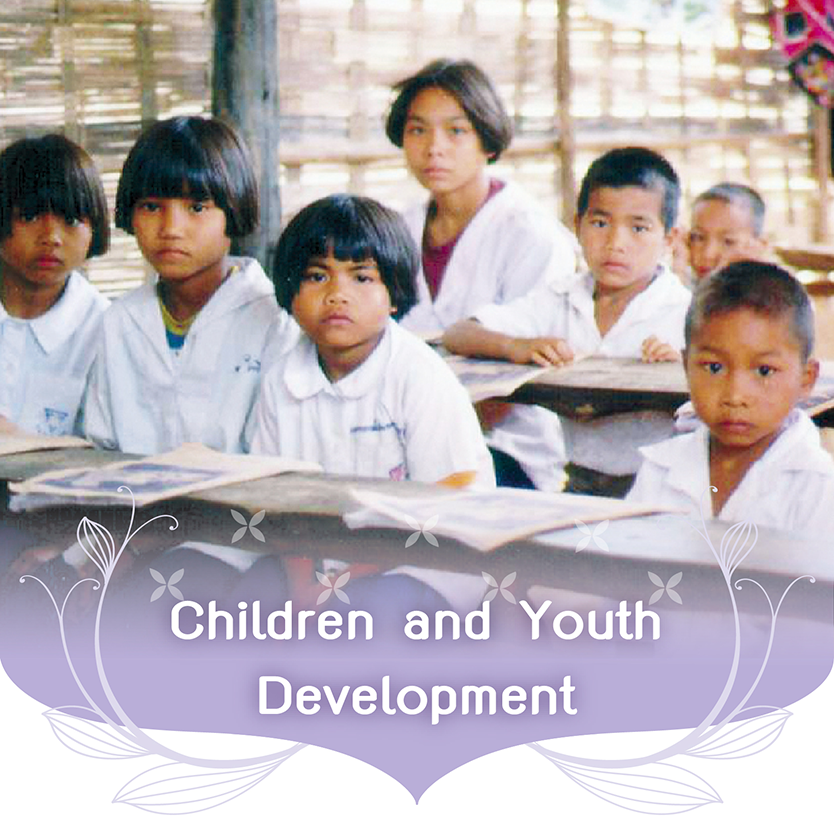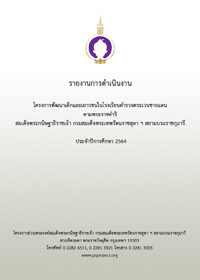Border Patrol Police Schools
Background
Border Patrol Police Schools (or BPP Schools) are schools that provide basic education to children and youth in rural areas, far away from telecommunication systems. The schools are under the supervision of the Royal Thai Police. The first Border Patrol Police School was established in 1956 at Ban Don Mahawan, Chiang Khong District, Chiang Rai Province. At the time, the area was remote. Most people living in the area were hill tribe people who only spoke their native language and could not speak Thai. The Ministry of Education was not able to provide formal education in that area due to the limitation of the staff and budget and the fact the area was very remote. Therefore, the border patrol police started to teach Thai language and Mathematics to the children. The students could then speak, read, and write in Thai. These skills allowed the children to communicate and trade with the people outside their community.
Initially, there were no buildings. So the classes were taught under the trees, under the leaders’ houses, or inside temples. Later, people had donated land and necessary tools to build school buildings. In addition, people donated books and teaching materials for class use. The border patrol police formally placed teachers at the schools.
Eventually, the government realized that the setting up of the Border Patrol Police Schools is beneficial. Therefore, the government has expanded the program to other similar areas. As of now, there are 222 Border Patrol Police Schools, located in 40 provinces, which are under the supervision of Superintendent Border Patrol Police Area and Border Patrol Police Bureau. Each Border Patrol Police School has its own educational committee, which consists of a principal and representatives from the villages. The committee will support the school in terms of basic education and other school development activities.

Context of the Communities
Thailand has 4,863-km borders with neighboring countries. Of these, 1,754 km is a border with Laos, 803 km is a border with Malaysia, and 1,800 km is a border with Myanmar. The areas near the borders are mountains and woods that are far from transportation. The people living in the areas are of various (more than ten) ethnic groups such as Thai, Karen, Hmong, Yao, Muser, Mon, etc. Most people are poor. They work as farmers or work for hire. Unlike people from other parts of the country, they lack opportunity to receive basic services from the government such as education and public health systems.
School’s Philosophy and Missions
The core philosophy of Border Patrol Police Schools is ‘Creating Wisdom, Developing Quality of Life, Establishing Stability’.
The missions of the Border Patrol Police Schools are (I) to provide basic education to children and people near the border areas, (II) to offer good quality of life for children and people in areas, in accordance with HRH Princess Maha Chakri Sirindhorn’s initiative and (III) to establish the national security.
Media
Source: CNA
Award winning short film 2023 the school lunch project : Through the kitchen window
Source: Border Patrol Police Sub-Division 43
Source: Border Patrol Police
The Agriculture for School Lunch Project
Source: The National Identity Office
The Border Patrol Police “Kurutayat” Project
Source: The National Identity Office
Development of Water Resources
Source: The National Identity Office





















